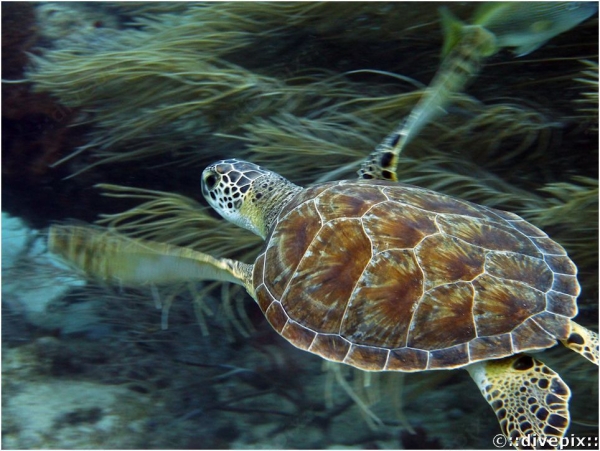| Aspect: | Oval flying saucer-like carapace, with relatively smooth light brown upper plates. The carapace is bordered by a number of smaller plates forming a relatively rough edge. |
| Population: | Now abundant, after near extinction in the early 1990s. |
| Notable feature: | Compared to the Hawsbill turtle, it has blunt upper beak. See top left picture (below) for subtle differences with Hawksbill Turtle. Often the unwilling transport of Remoras and Sharksuckers. |
| Environment: | Found in open waters, but more often in alga and grass-covered sea-bottoms in sheltered bays where they can be seen grazing. Unlike the Hawksbill turtle, it essentially is herbivore. |
| Behaviour: | Always a sweet sight, will not be too bothered by a quiet, non aggressive swimmer, but is more wary than the generally larger Hawksbill Turtle. |





Green Turtle
- French designation: Tortue Verte
- Latin designation: Chelonia midas
- Creole designation: Toti
- Latin family: Cheloniidae
- Size (cm): 75-110
View the embedded image gallery online at:
https://divepix.webdhb.com/index.php/en/animalia/turtles/148#sigProIdb06358fe75
https://divepix.webdhb.com/index.php/en/animalia/turtles/148#sigProIdb06358fe75




